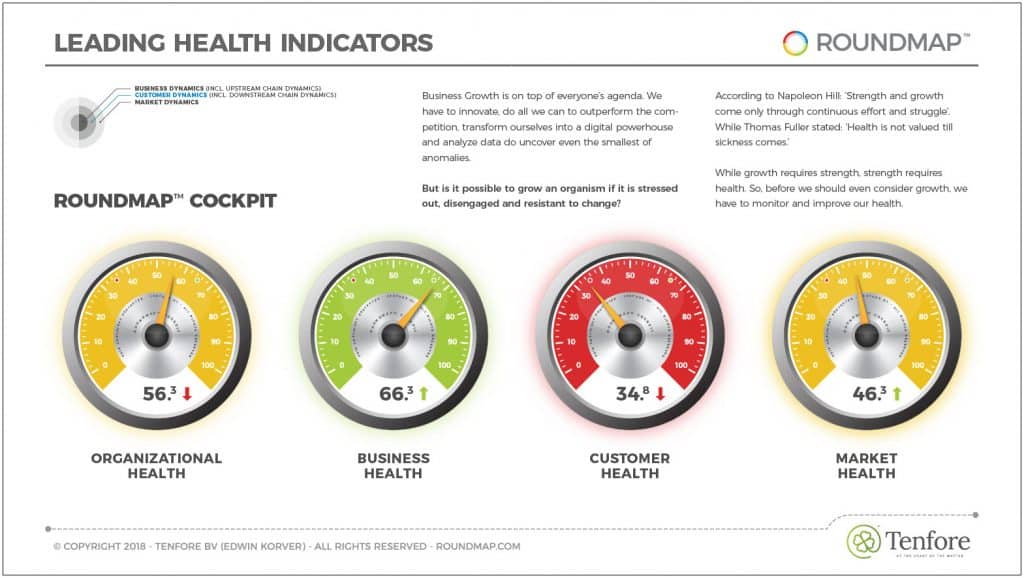Business growth seems to be on top of everyone’s agenda. We must innovate to outperform the competition, transform ourselves into a digital business, and analyze data to uncover even the most minor anomalies. But is it possible to grow any organism that is stressed out, disengaged, and (therefore) resistant to change?
Running Your First Marathon
If you’ve decided to run your first marathon within the next six months, how do you prepare yourself? Simply appearing at the start and starting running isn’t likely to get you very far, so you might want to consider seeking advice from experts.
Like these 7 steps on Active.com:
- Find the Right Training Plan
- Fuel and Recover
- Set Your Goals Right
- Be Mentally Prepared
- Get the Right Equipment
- What to Eat Before the Race
- It Will be Hard, But You Can Do It
That sounds like a pretty good start – and the similarities with finding a product-market fit are striking. But there is one vital omission: How about your health?
If you are being treated for cancer, chances are you might not make it through practice, let alone run the race. As it stands out, good health is a precondition for any outstanding achievement.
Consider Your Health First
Napoleon Hill states, ‘Strength and growth come only through continuous effort and struggle.’ Thomas Fuller added, ‘Health is not valued till sickness comes.’
Without health, there is no strength. And without strength, our chances for growth are slim. So, before considering growth, let’s attend to our health first.
RoundMap’s Framework
To consider the health of our operation, we need to know what to look for. We distinguish between three dynamics:
- Business Dynamics (HR, Finance, Production, Planning, Downstream Logistics, etc.)
- Customer Dynamics (PR, Marketing, Sales, Customer Service, and Upstream Logistics)
- Market Dynamics (Competitive Analyses, Legislation, Demographics, and Behavioral Data)
- Human Dynamics (Value, Vision, Culture, Leadership, Management, etc.)
Business Health Indicators
We can select from various financial indicators to assess the first group, business health. Using more indicators allows for more accurate predictions of future growth.
These are some of the KPIs (including the fiscally-specific category):
- Accounts Receivable (cashflow)
- Accounts Payable (cashflow)
- Total Expenses (cost)
- Inventory Turnover (cost)
- Debt to Equity Ratio (debt)
- Current Ratio (debt)
- Return on Innovation Investment (investment)
- Inventory Assets (investment)
- Operating Profit Margin (profitability)
- Net Profit Margin (profitability)
- Revenue per FTE (revenue)
- Net Income (revenue)
These financial KPIs indicate whether a business is healthy enough and has the strength (potential) to grow.
Customer Health Indicators
While Business Health perceives the business-facing operation, we must also look at the customer-facing operation. To assess Customer Health, we want to look specifically at some of the following indicators:
- Sales Growth (profitability)
- Customer Lifetime Value (profitability)
- Customer Acquisition Cost (profitability)
- Conversion Rate
- Customer Satisfaction (NPS)
- Customer Trust
- Customer Effort
- Customer Retention
- Overall Satisfaction
- Brand Attributes
- Active/resolved Issues
- Complaint Escalation Rate
These KPIs indicate whether a customer base is healthy enough and has the strength (potential) to grow.
Market Health Indicator
We should also consider market circumstances, i.e., opportunities and threats. These will greatly determine our future growth. Some of the indicators to look for are:
- Competitive Comparison
- External, Industry Benchmarks
- Changes in Rules & Regulation
- Government Programs
- Price Fluctuations
- Market Integration
- Technological Innovation
- Technological Disruption
- Website & Keyword Analyses (Customer Behavior & Intent)
- Trends
Market Health Indicators are typically complex to capture but vital to understanding market conditions. So, try to weigh each instance and convert it into a number between 1 and 10.
Capabilities for Growth
But we’re not there yet. If we plan for growth, we will need to have the right capabilities (tangible and non-tangible). This includes a workforce (human capital) but could also include the need for a distribution network or storage facility. From a staff point-of-view make sure you measure:
- Employee Happiness, Engagement, and Turnover (organization)
- Openness to Innovation and Change (organization)
- Adherence to Company Values (organization)
RoundMap Health Monitor
We are working on a digital dashboard allowing leadership—and every engaged employee—to monitor the relevant health KPIs. You can share it with your customers as part of your firm’s dedication to honesty and transparency.
The RoundMap Health Monitor will include four dials — but you will be able to drill down to each of the underlying KPIs:
- Organizational Health Indicator (OHI)
- Business Health Indicator (BHI)
- Customer Health Indicator (CHI)
- Market Health Indicator (MHI)
The following image is an indication of what we aim to achieve:












